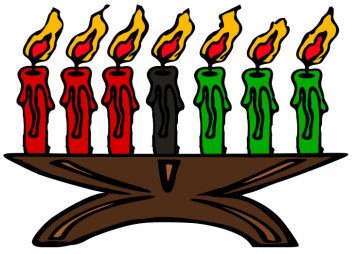Most children nowadays are fashion conscious, be it through peer pressure or advertising. Students with disabilities are no different. However, for a variety of reasons – be it body shape or size, ability to accommodate a brace, or comfort – much of what is fashionable does not fit. These children, and their parents, are left having to wear plain garments such as sweats, making them stand out even more from the crowd than they already do. Fortunately, thanks to a number of entrepreneurial activists and advocates, this situation is starting to change.

Runway of Dreams: Making Clothing for All Children a Reality
Oliver, was very conscious of the unstylish sweat pants he wore, which only highlighted his already feeling different because of his muscular dystrophy. New Jersey mom Mindy Scheier felt just as perplexed: the “cool” clothes Oliver’s peers wore were not able to accommodate the leg braces he needed. Astonished that she could not find nice clothes her son could wear, Mindy drew on her background as a fashion designer to modify clothing for Oliver, refitting shirts and jeans with magnetic fasteners. She then realized that other families had children with needs like Oliver’s, so she set out to research starting her own business. She created a clothing survey on Facebook and attended focus groups for families of children with various physical disabilities. The responses were overwhelmingly positive; the greatest need was for adapted fasteners, adjustable waistbands, and changeable pant legs and sleeves. She was struck, “seeing the joy that came over the faces of these children, just to have a voice, to say that they would love to wear something as basic as jeans,” she says. “With the parents, it was their voices being heard, that said ‘I want my child to feel and look like other children, even though they are differently abled.” These efforts led to Runway of Dreams, an advocacy group urging clothing manufacturers and retailers to make clothing that would support this community.
The Up Side of “Down Sizing”: Clothing for Children with Down Syndrome
Dull clothing does not do justice to the bubbly personalities of so many children and adults with Down syndrome. Their shortened femurs mean that ordinary jeans and pant legs do not taper at the knee and the bottoms have to be rolled up many times, giving the clownish impression that these children are playing dress-up games of a much younger and immature age. Buttons and zippers can be tricky as well, limiting the independence of the children wearing these items. This was certainly the case with Maggie. So when her grandmother, Karen Bowersox, realized she could not find clothing online for children with Down syndrome, she started to seek funding for the company she founded, “Downs Designs: Special Clothes for Special People.”
“Dip-Down” waistbands fit comfortably beneath the belly while covering the rest of the body; this innovation alone accounts for 60% of the sales at Down Designs. Other innovations include wider necks and shorter sleeves, as well as fasteners enabling the wearer to dress independently. Customers receive personal service to ensure excellent fit and comfort. “To see these people in clothes that fit them,” says Karen, “It changes everything for them.”
Classy Little Fashions: Making Big Changes in the Fashion Industry
Being fashionable and feeling good about oneself is something people with disabilities – like anyone else – do not outgrow. An example is Jess Wallace, a disability activist with Osteogenesis Imperfecta (OI), a condition that has left her with a physically tiny stature. “I can tell that my audiences don’t perceive me as the educated professional that I am. It’s slightly amusing but mostly frustrating when I am waiting to take the podium and the audience is giving me that look, like I’m a three-legged puppy that just fell off a garbage truck.” Carol Briney and Jane Hash (who also has OI) have come upon a way to create clothes that fit people with unusually small bodies. They established the Classy Little Fashions Foundation. This organization uses 3-D printing technology to create a mold of a person’s unique dimensions and shape; they can send the data or the mold itself to someone who can create clothing that will fit. “All of that has changed since the inception of Classy Little Fashions.”
For the Golden Years
For senior citizens and other people using a wheelchair, Legg Sleeves has arrived at the simple, yet ingenious solution of detachable pant legs, offering these users greater independence in getting dressed or changing. These adapted garments are also suitable for amputees. Patents are pending, but like all these examples, they offer greater hope, independence, and dignity.

 “My, what big ears he has!” A little elephant was born in southern Africa. However, not long thereafter, the peace of that happy occasion was shattered by a sudden flash and a bang. Poachers claimed the little elephant’s mother. A twelve-year-old boy named Thabo watched a rescue helicopter bring in a baby elephant to the wildlife refuge, where he lives. The veterinarian, Bitri, will try his best to save her. Thabo was there to comfort the baby elephant with big, spread-out ears he has decided to call Butterfly.
“My, what big ears he has!” A little elephant was born in southern Africa. However, not long thereafter, the peace of that happy occasion was shattered by a sudden flash and a bang. Poachers claimed the little elephant’s mother. A twelve-year-old boy named Thabo watched a rescue helicopter bring in a baby elephant to the wildlife refuge, where he lives. The veterinarian, Bitri, will try his best to save her. Thabo was there to comfort the baby elephant with big, spread-out ears he has decided to call Butterfly.










